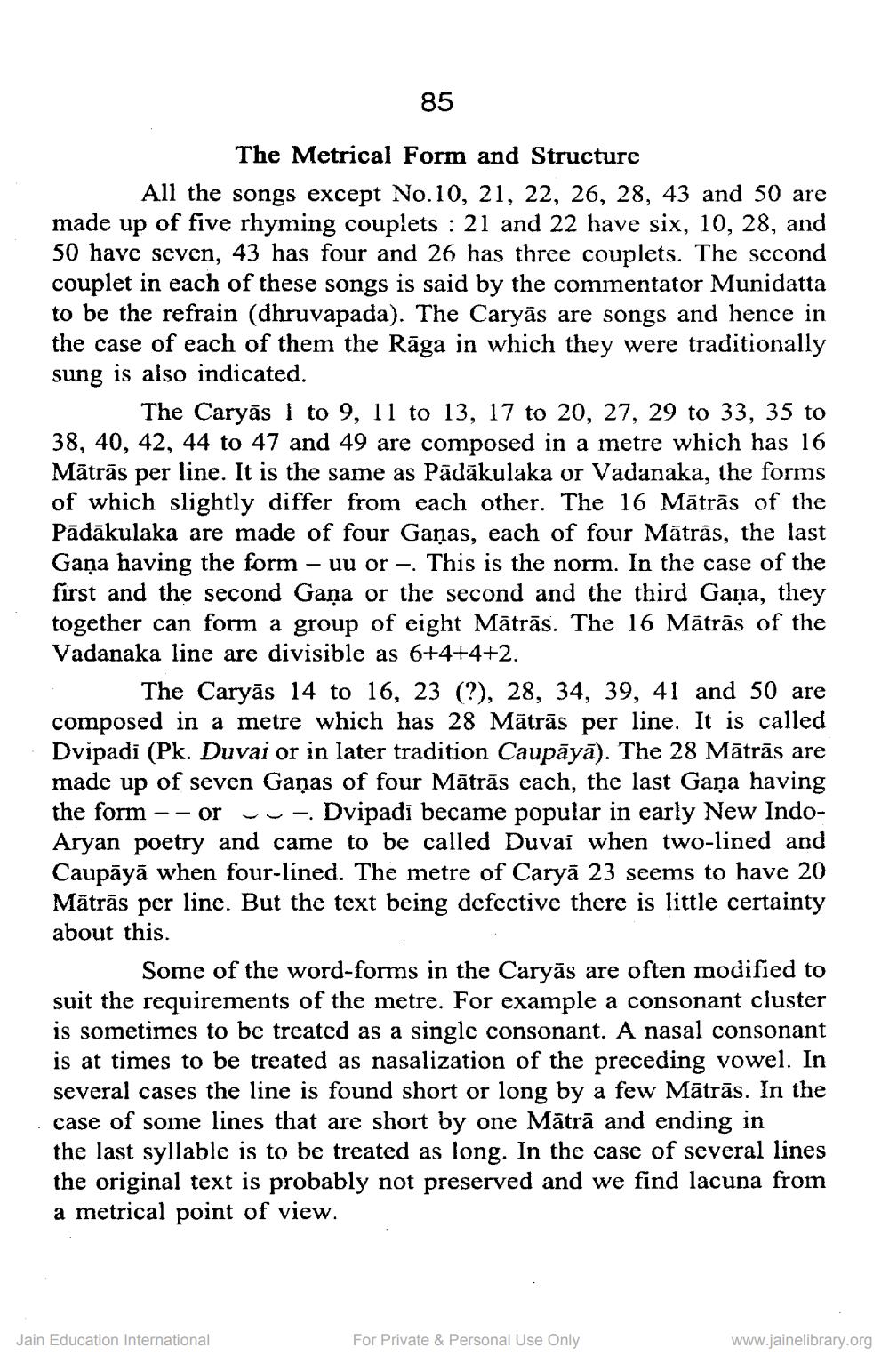________________
85
The Metrical Form and Structure
All the songs except No. 10, 21, 22, 26, 28, 43 and 50 are made up of five rhyming couplets: 21 and 22 have six, 10, 28, and 50 have seven, 43 has four and 26 has three couplets. The second couplet in each of these songs is said by the commentator Munidatta to be the refrain (dhruvapada). The Caryas are songs and hence in the case of each of them the Raga in which they were traditionally sung is also indicated.
The Caryas 1 to 9, 11 to 13, 17 to 20, 27, 29 to 33, 35 to 38, 40, 42, 44 to 47 and 49 are composed in a metre which has 16 Mātrās per line. It is the same as Pādākulaka or Vadanaka, the forms of which slightly differ from each other. The 16 Mātrās of the Pādākulaka are made of four Gaņas, each of four Mātrās, the last Gana having the form - uu or -. This is the norm. In the case of the first and the second Gana or the second and the third Gaṇa, they together can form a group of eight Mātrās. The 16 Mātrās of the Vadanaka line are divisible as 6+4+4+2.
The Caryās 14 to 16, 23 (?), 28, 34, 39, 41 and 50 are composed in a metre which has 28 Mātrās per line. It is called Dvipadi (Pk. Duvai or in later tradition Caupāyā). The 28 Mātrās are made up of seven Ganas of four Mātrās each, the last Gaṇa having the form Dvipadi became popular in early New IndoAryan poetry and came to be called Duvai when two-lined and Caupāyā when four-lined. The metre of Caryā 23 seems to have 20 Mātrās per line. But the text being defective there is little certainty about this.
or -~
——
Some of the word-forms in the Caryās are often modified to suit the requirements of the metre. For example a consonant cluster is sometimes to be treated as a single consonant. A nasal consonant is at times to be treated as nasalization of the preceding vowel. In several cases the line is found short or long by a few Mātrās. In the case of some lines that are short by one Mātrā and ending in the last syllable is to be treated as long. In the case of several lines the original text is probably not preserved and we find lacuna from a metrical point of view.
Jain Education International
For Private & Personal Use Only
www.jainelibrary.org




